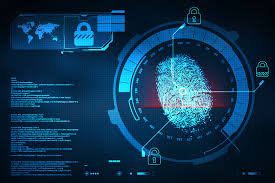“Security Stack to Defend in-depth”
Security Stack is crucial for Organizations for its protection from adversaries. A well-architected security stack enables a defense-in-depth strategy—ensuring that if one security layer is compromised, others continue to protect the environment.
Layers of the Security Stack
- Network Security: Prevents unauthorized access and detects suspicious activities. Key components include:
- Firewalls
- IDS/IP
- VPNs
- Network Access Control (NAC)
- Endpoint Security: Safeguards devices such as laptops, smartphones, and servers from malware and intrusions:
- Antivirus & EDR
- Mobile Device Management (MDM)
- Patch Management
- Identity & Access Management (IAM): Ensures appropriate access to systems and data:
- Multi-Factor Authentication (MFA)
- Single Sign-On (SSO)
- Privileged Access Management (PAM)
- Application Security: Protects applications from threats like:
- SQL Injection
- Cross-site Scripting (XSS)
- Insecure APIs
- Data Security: Controls access to sensitive information and enables recovery:
- Encryption
- Data Loss Prevention (DLP)
- Backup & Disaster Recovery
- Security Monitoring & Incident Response: Enables real-time detection, investigation, and response:
- SIEM
- SOC
- Threat Intelligence
- Governance, Risk & Compliance (GRC): Defines policies, audits and ensures alignment with standards like:
- ISO 27001
- NIST
- GDPR
Why Your Organization Needs a Security Stack
- Layered Defense: Multiple layers mitigate risk by providing backup when one layer fails.
- Reduced Attack Surface: Access controls, system isolation, and endpoint hardening restrict intrusions.
- Regulatory Compliance: A robust stack supports adherence to standards such as GDPR, HIPAA, PCI-DSS, ISO 27001, and SOC 2—vital for audits and avoiding penalties.
- Reputation & Trust: Prevents data breaches that erode customer, partner, and investor confidence.
- Business Continuity: Ensures fast recovery through backup, ransomware protection, and incident response protocols.
- Threat Detection & Response: Enables proactive threat management using SIEM, EDR/XDR, and threat intelligence tools.
Core Technologies Explained:
- Security Information & Event Management (SIEM): Aggregates, normalizes, and analyzes log data across the network to detect anomalies and generate alerts.
- Extended Detection and Response (XDR): Correlates data across endpoints, cloud, email, and network to detect advanced threats and trigger responses.
- Security Orchestration, Automation, and Response (SOAR): Automates incident response workflows, integrates security tools, and assists analysts in handling threats efficiently.
Comparison: SIEM vs XDR vs SOAR
| Feature | SIEM | XDR | SOAR |
| Function | Aggregates and correlates log data. Detects anomalies. Generates alerts. | Correlates signals from endpoints, cloud, email, and network. Detects advanced threats. | Automates playbooks and responses. Assists analysts. Maintains audit trails. |
| Benefits | Compliance-ready. Real-time alerting. Historical analysis. | Unified threat detection. Faster root-cause analysis. Threat hunting. | Reduced response time. Cross-tool coordination. Playbook execution. Incident tracking. |
| Limitations | High false positives. Needs expert tuning. Limited native response. | Narrower compliance focus. Vendor lock-in. | Requires integration and human oversight for strategic decisions. |
| Examples | Splunk, IBM QRadar, Microsoft Sentinel | CrowdStrike Falcon, Palo Alto Cortex XDR, SentinelOne, Microsoft Defender XDR | Palo Alto Cortex XSOAR, Splunk SOAR, IBM Resilient, Swimlane |
Unified Application in the Security Stack
- SIEM provides centralized visibility by collecting and correlating logs from various sources.
- XDR extends detection across multiple layers, connecting endpoint, cloud, and email signals for holistic threat identification.
- SOAR orchestrates actions across all tools—automating responses like IP blocking, device isolation, and password resets—enabling swift containment.
Together, SIEM, XDR, and SOAR create a synergistic security ecosystem that is greater than the sum of its parts.
Conclusion
Selecting the right combination of SIEM, XDR, and SOAR depends on budget, organizational scope, and available expertise. A thoughtful, integrated approach offers the strongest defense—ensuring security teams are equipped to prevent, detect, and respond to modern cyber threats with speed and precision.








